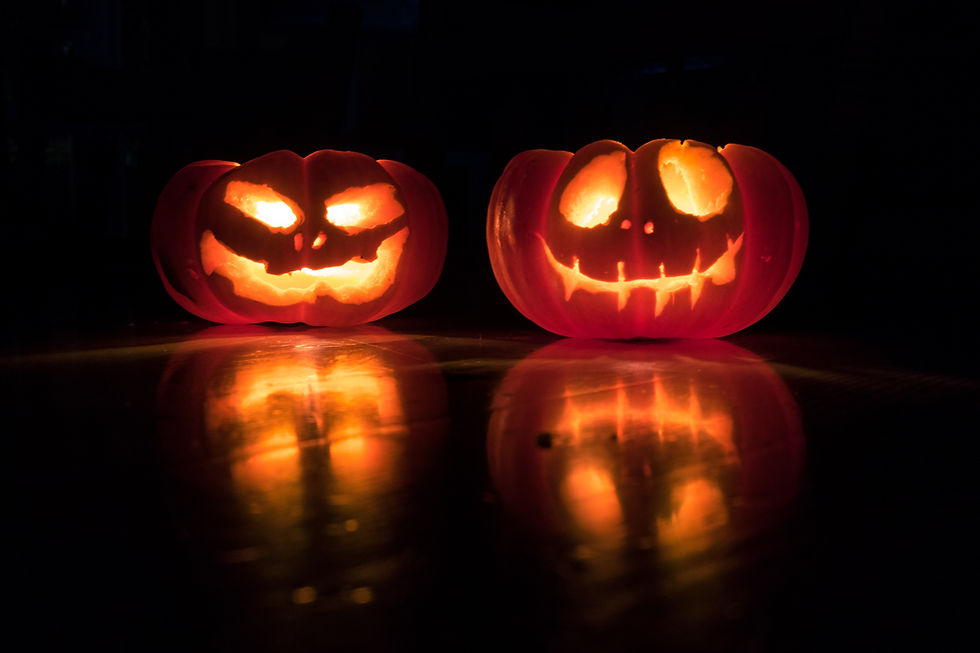What is it all about?

Pure commercialism, without any cultural-historical background, thoughtlessly adopted from the Americans:
Many people have such reservations about Halloween.
What they don't know:
The creepy event, which is celebrated every year on October 31, has its origins in Europe - and probably even has a Catholic background!
In fact, "All Saints' Day" of all things gives Halloween its name: From the English "All Hallows' Eve" became Halloween. This refers to the evening before "All Hallows' Day", i.e. before All Saints' Day. All Saints' Day is on November 1, so "All Hallows' Eve" is October 31 - exactly when Halloween is celebrated worldwide.
A custom that is most common and popular on Halloween is the transformation into mostly creepy figures. Whether witch, vampire or ghost, devil or zombie: There are no limits to the imagination when it comes to disguises. Not only children, but also adults love to dress up.

In Celtic history, it is said that the meaning of Halloween is based on the Celtic "Samhain Festival" and was celebrated as early as 500 BC - always on the Celtic New Year, October 31! The Celts believed that on this evening the worlds of the living and the dead collide.
So where is the connection between Halloween and the skull?
According to legend, the dead try to take possession of the souls of the living and secure their chance of life after death. The living must either hide or disguise themselves as the dead to avoid being recognized. Many also used the disguise to scare off and drive away the dead and ghosts.

Am Tag der Toten, spanisch Día de Muertos (auch Día de los Muertos), einem der wichtigsten mexikanischen Feiertage, wird traditionell der Verstorbenen gedacht. Die Vorbereitungszeit für die Feierlichkeiten beginnt Mitte Oktober; gefeiert wird vom Vorabend von Allerheiligen (31. Oktober) bis zum Gedächtnis Allerseelen am 2. November.
According to Mexican tradition, on November 1 and 2, the dead return from the afterlife on Dia de Muertos to visit those who have remained and indulge their souls with worldly pleasures. This notion leads Mexicans to throw lavish parties with delicious food, alcohol, music and dancing to welcome their dead. The bigger and more exuberant the party, the more popular the dead person was in his or her former life.

Grinning papier-mâché skeleton figures, little skulls made of glittery icing, bread shaped like bones, a corpse in a coffin made of chocolate and the Calavera Catrina, the skeleton lady with a hat decorated with flowers show the creative spectrum of Mexicans. While Halloween is traditionally considered a dark night of terror and doom, Día de los Muertos is an explosion of color and life-affirming joy.
In the end, there are many ancient customs, traditions and rituals that are chronologically located around the Halloween holiday. In all of them skulls play a foreground role, as the theme of death is celebrated in an eerie, sad or even life-affirming way.
Life is a cycle, and death is part of life. Skulls are a sign of transience, as they remind us that life and our time here is limited. So enjoy the moment and remember that every day is a gift!
#artgallery #artshop #artdealer #edelsteinschmuck #handmadeartisanjewelry #unique #handmadejewelry #handmadegemstonejewelry #handmadebeadedjewelry #handmadejewellerydesign #skullsandspirits #skulldesign #totenkopfschmuck #bikerschmuck #herrenschmuck #männerschmuck #totenkopfdesign #handarbeit #artesania #schmuckfürmänner #mensjewelry #mensjewellery #jewellery #bisuteria #share #like

Comments